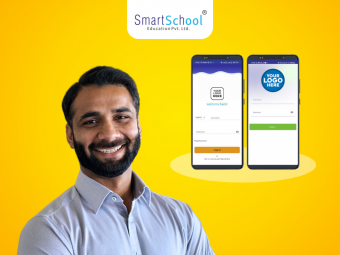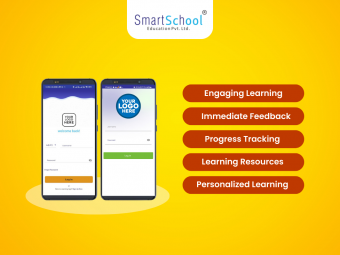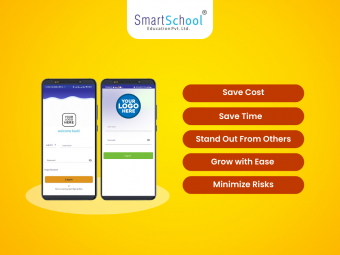In today's digital age, education has been revolutionized with the introduction of online and mobile applications. Education apps have become increasingly popular among students, teachers, and parents alike. These apps provide a new level of flexibility and accessibility to learning by making educational resources available anytime and anywhere. With the help of educational apps, students can access study materials, complete homework assignments, take online quizzes, and connect with teachers and classmates from the comfort of their homes.
If you're interested in building your own education app, there are a few things you need to consider. You'll need to think about the features you want to include, the audience you're targeting, and the platforms on which your app will be available. Additionally, you'll need to choose the programming language and framework for your app's development. In this article, we'll explore some of the key considerations when building an education app, and provide some tips to help you get started.
Developing an education app requires a well-planned approach that considers the needs of students and educators, as well as the technical aspects of the app. Here are the steps involved in building an education app.
7 Steps To Build An Education App
1. Define the Purpose and Goals of the App:
Defining the purpose and goals of the app is a critical first step in building an education app. This involves answering questions such as who the app is for, what subject(s) it will cover, and how it will be used. This information will guide the development of the app, ensuring it meets the needs of its intended audience. To help define the purpose and goals of the app, developers can conduct research, gather feedback from potential users, and work with subject matter experts and educators.
2. Choose the Right Platform:
Choosing the right platform for the app is another important step. Native platforms, such as iOS and Android, are popular choices for education apps because they offer better user experience and performance. However, web-based or hybrid platforms may be a better choice for simpler apps or those with limited resources. Developers should also consider the platform's development tools, user interface guidelines, and market share when choosing a platform.
3. Develop the Content:
The app's content is a critical component of the app and should be developed with care. Content should be engaging, interactive, and aligned with the app's purpose and goals. Developers should work with subject matter experts and educators to ensure the content is accurate, up-to-date, and effective. Content can take many forms, including videos, animations, interactive quizzes, and games.
4. Design the User Interface:
The user interface (UI) of the app is what users interact with and should be intuitive, easy to navigate, and visually appealing. The UI should also be consistent with the platform's design guidelines, providing a seamless user experience. The UI should include features such as search, filters, and bookmarks to help users access the content easily. Developers should also consider accessibility features, such as text-to-speech and closed captioning, to make the app usable by a broader audience.
5. Integrate Interactive Features:
Interactive features can help increase user engagement and improve learning outcomes. These features should be aligned with the content and learning objectives of the app and provide immediate feedback to users. Examples of interactive features include quizzes, puzzles, games, and simulations. Developers should also consider the user's learning style and level of knowledge when designing interactive features.
6. Test and Launch:
Testing the app is crucial to ensure its quality, usability, and functionality. Developers should test the app thoroughly before launching it to identify and fix any issues. Testing should involve a diverse group of users to identify usability issues or bugs. After testing, the app can be launched on the platform(s) of choice. Developers should also consider app store optimization (ASO) to increase visibility and downloads of the app.
7. Monitor and Update:
After launching the app, it is important to monitor its usage and user feedback regularly. Monitoring can help identify areas for improvement and inform future updates. Updating the app regularly with new content, features, and bug fixes can help maintain its relevance and usefulness to its users. Developers should also consider gathering feedback from users regularly to identify areas for improvement and feature requests.
In conclusion, building an education app requires a well-planned approach that considers the needs of students and educators, as well as the technical aspects of the app. By following these steps, developers can create an app that meets the needs of its intended audience, provides an engaging and interactive learning experience, and ultimately improves learning outcomes.
Get Edtech App Without Building From Scratch With Whitelabeling!
Edtech companies may consider going for a white labeled Edtech app instead of building from scratch for several reasons, including:
1. Time and cost savings:
Developing an Edtech app from scratch can be time-consuming and expensive, especially if you don't have a dedicated development team. Whitelabel solutions provide a ready-to-use app that can be customized and branded according to your needs, which can save a significant amount of time and resources.
2. Reduced technical expertise:
Developing an app from scratch requires a high level of technical expertise in app development, testing, and deployment. Using a whitelabeled solution can help you avoid the need to hire expensive developers, and you can focus on your core competencies, such as content development, marketing, and customer service.
3. Scalability:
Whitelabeled Edtech apps are designed to be scalable, meaning they can handle an increasing number of users and courses without any performance issues. This means you can quickly and easily expand your business as demand grows, without worrying about the technical side of things.
4. Customization:
While a whitelabeled Edtech app is pre-built, it is also highly customizable. You can add your branding, content, and features, as well as tailor the app to your specific audience. This allows you to offer a unique experience that reflects your brand and meets the needs of your target market.
5. Technical support:
With a whitelabeled Edtech app, you typically get access to technical support from the provider. This can be invaluable, especially if you don't have a dedicated IT team. You can rely on the provider to troubleshoot any issues that arise, ensuring your app runs smoothly and your users remain happy.
Overall, using a whitelabeled Edtech app can help Edtech companies save time, money, and resources, while also providing a scalable, customizable, and reliable solution that meets the needs of their audience.
Get Your Own K-12 Edtech App Whitelabel In Your Own Brand Name With SmartSchool
SmartSchool offers a comprehensive solution to edtech companies looking to establish their own brand presence in the market by providing a white-label education app. With SmartSchool’s white-label K-12 edtech app solution, you can get an interactive learning app that contains digital content from nursery to class 12th and a powerful teaching app, all under your institution’s brand name.
The interactive learning app offers a wide range of digital content that has been designed by experts in the field of education. The content is aligned with the latest educational standards and provides an engaging learning experience for students. The powerful teaching app offers a suite of tools and features that make teaching more efficient and effective. Teachers can use the app to create lesson plans, assign homework, track student progress, and communicate with parents.
The white-label solution offered by SmartSchool allows edtech companies to establish their brand presence in the market without the need to invest in costly app development and maintenance. The app is already developed and tested, and the app provider ensures that the app works seamlessly on different devices and operating systems. The solution also eliminates the need for hiring an in-house team of developers and support staff, saving you time and money.
Features Of SmartSchool’s Whitelabel Edtech App Solution
- 50k+ HD Videos - Animated and Anchor Based Videos
- 2 Million+ Learning Resources
- Huge Question Bank Of 1,00,000+ Questions
- 3,000+ Publishers Mapped For Personalized Learning
- 10,000+ Interactive Tools For Revision
- CBSE, ICSE and All Major Indian State Boards
- Bilingual Content - Both In Hindi and English
- Real-Time Tracking of Student Performance
- Monitor Progress and Content Usage Report
- Special Learning Zone for Dyslexia Students
- Real Life Videos and Science Experiments
- Easily Switch Between Offline and Online Content Mode
- Diagrams, Mapwork, History Timelines & Toppers Answers
- HOTs, Previous Year Question Papers & Formulae Master
- Change video speed, Search content and bookmark favourite videos
- Live classes, Fee Tracking, Assignments and Attendance
- WhatsApp, App notifications and Email platform
To Know More, Call 8927089270.
Read More: What are Edtech Apps? Get Your App Without Developing From Scratch




Leave your comment